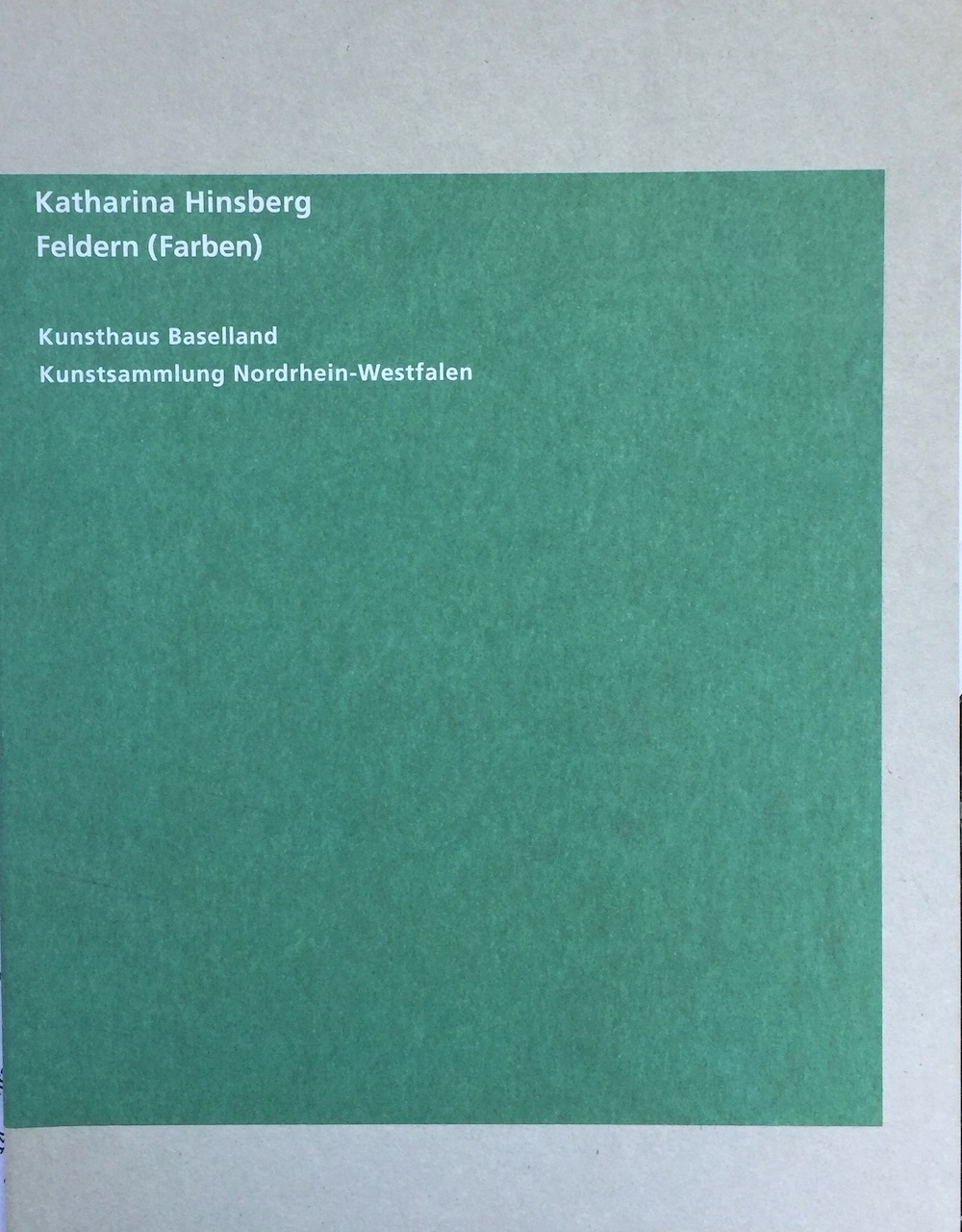Katharina Hinsberg
Feldern (Farben)
22.5. —
12.7.2015
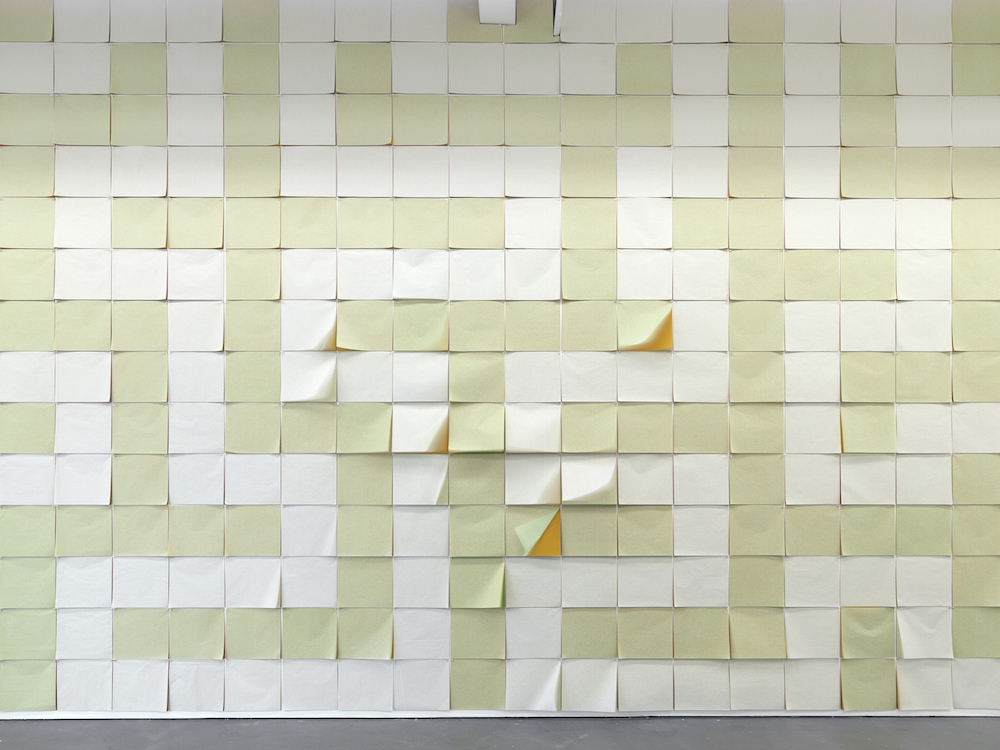
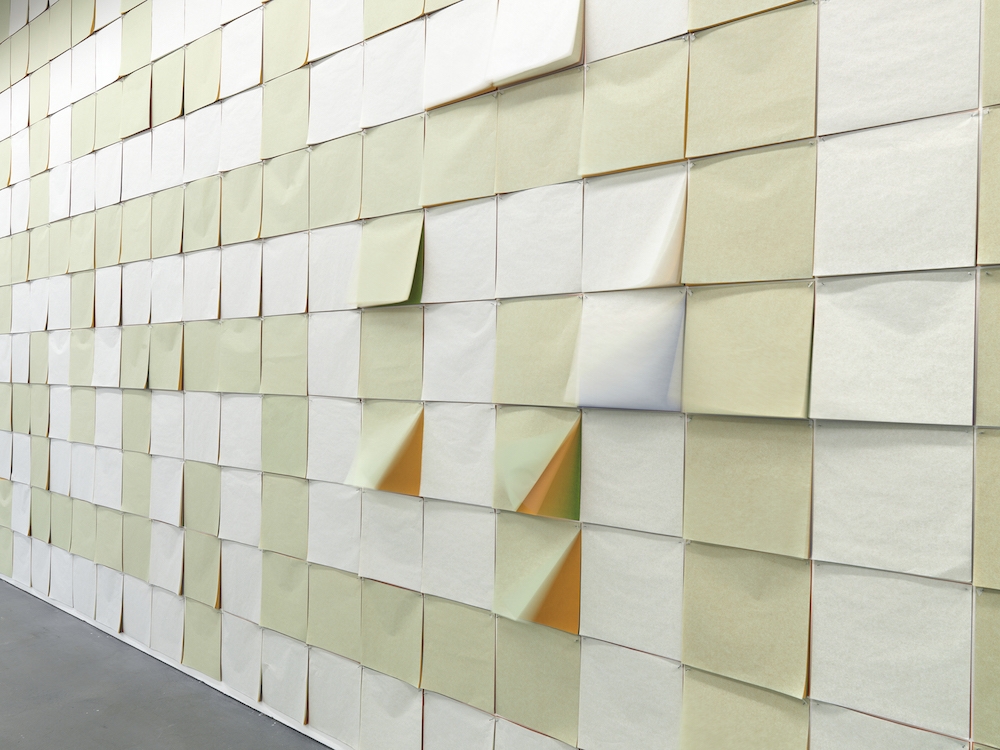
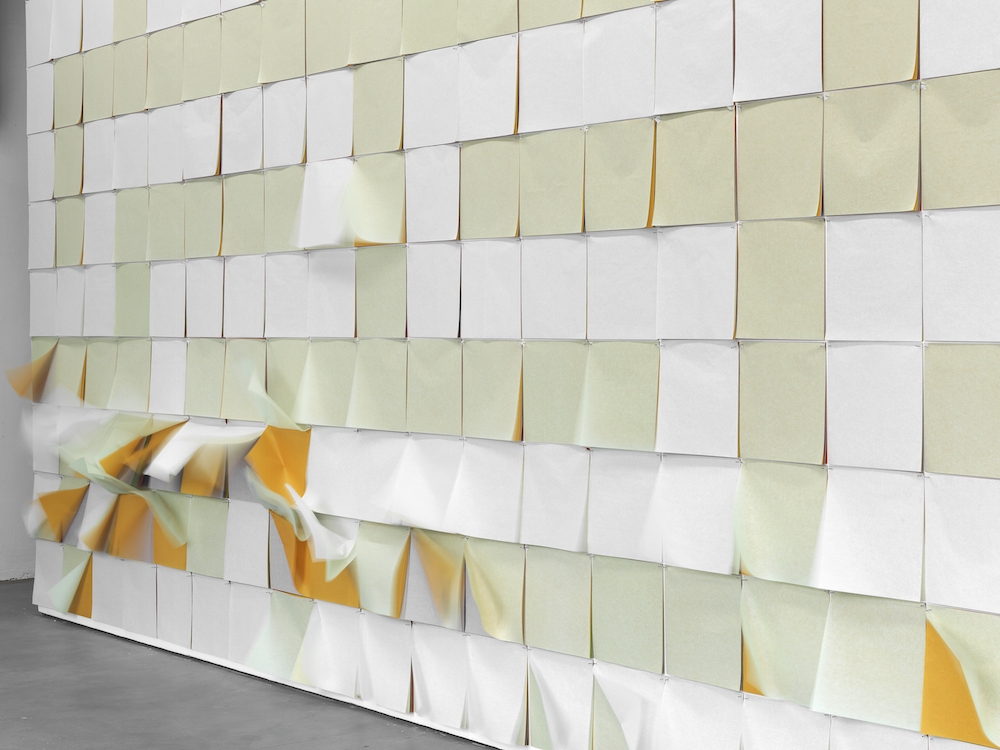
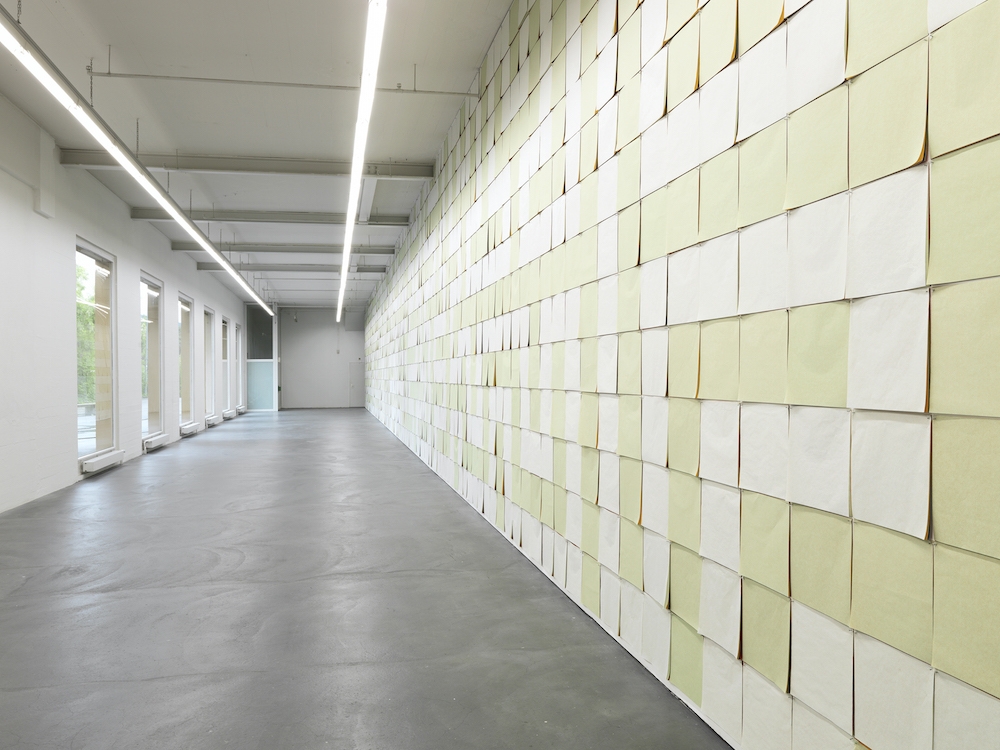
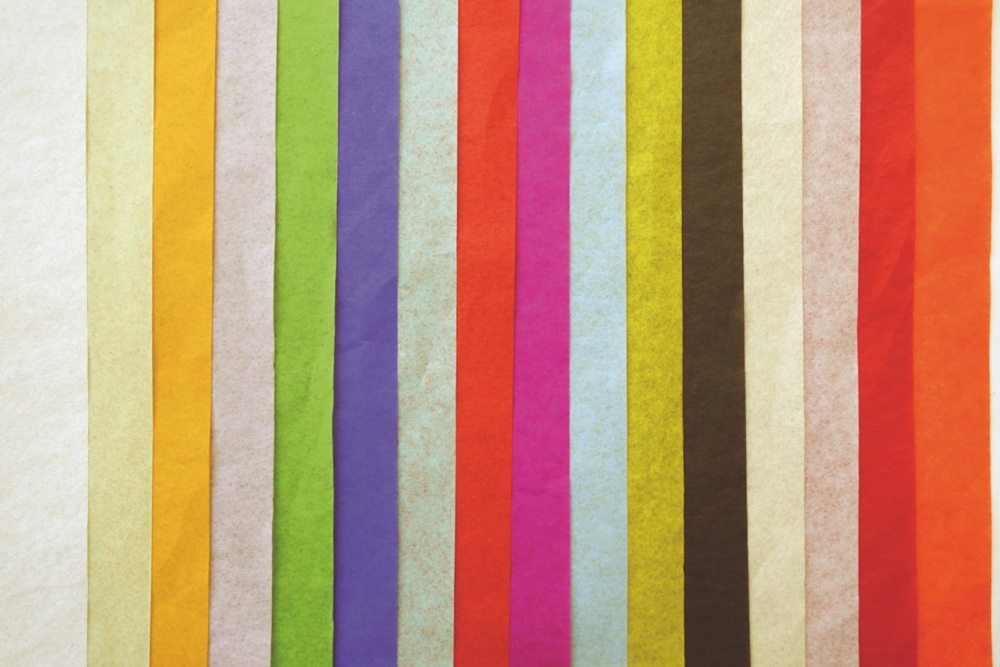
Selected press coverage
Katharina Hinsberg primarily uses the medium of drawing and its possibilities, while also relating drawing to space. Hinsberg, who has lived and worked for several years at the Raketenstation Hombroich, uses very diverse materials for her drawings, as well as working with the methods of installation, with which she extends the dimensions of lines into space. With at times fragile materials and paper forms — drawn or cut linear structures — she manages to transform rooms both subtly and precisely. At the Kunsthaus Baselland she is going to pursue her interest in the mutable manifestations and different facets of process, which defines her work, through a new, largescale work.
The expansive installation Feldern (Farben) by artist Katharina Hinsberg has fundamentally transformed the Kunsthaus Annex with its wall piece some 36 metres long – and has done so with quite a specific material. Wafer-thin 20-gram tissue in 16 different colours was layered by the artist and mounted onto a framework of square fields across the whole wall. The various colour tones and paper layers are, in turns, more or less visible thanks to the transparency of the material as well as air movements in the space. Over the course of the exhibition, which lasts several weeks, new images and colour combinations will continually be generated, both by the artist and artistic colleagues from Basel.
The first image, or rather the first basic motif, that the artist has arranged by partially removing the uppermost sheets, is a continuous, long line that runs across the whole wall without interruption. This first image is the precondition for all the images and adjustments that follow. Large new colour fields can emerge as layers of the paper are taken away, responding to previous arrangements, developing these further or even, in part, obliterating them — a process that links appreciation of the colour space with its own continual transformation.
Within her work, which can be read from the perspective of both painting and drawing, Katharina Hinsberg grapples with an important question regarding the power of images: is an image an open, mobile arrangement, that respects and incorporates space and time as well as processes and methods, yet can equally demonstrate its underlying power? Despite this open conception of images, one that involves the visitor, sustained precision within the spatial image that emerges is also important to Katharina Hinsberg. Over the weeks the exhibition runs she herself will intervene in the evolving image and thus enable a sustained exchange between artist and viewer via the work. With this work Hinsberg also discusses the question of the traditional use of the term ‘image’. Her image created in the Kunsthaus is one that continually changes, that claims monumentality while all the while availing of a material that could hardly be softer or more fragile. With her title Feldern (Farben) [Fields (Colours)] the artist plays knowingly with the concept of Colour Field painting of the 1950s, a movement which emerged primarily in the USA, engaged, amongst other concerns, with the perception of different fields of colour on canvases that were in part extremely large in scale. Thus the work in the Kunsthaus Baselland tells us much about the artist’s strategy of allowing a work to develop from a given space, fundamentally changing the perception and the physical experience of that exhibition space and in so doing instilling the image with great dynamism, poetry and extraordinary potential.
Text by Ines Goldbach
The exhibition and catalogue were generously supported by Werola as well as by the supporter of Kunsthaus Baselland: kulturelles.bl, Basellandschaftliche Kantonalbank, Gemeinde Muttenz, Migros Kulturprozent, werner sutter AG.
During Katharina Hinsberg's exhibition the two solo exhibitions by Alexander Gutke and Lara Almarcegui were also on display.
